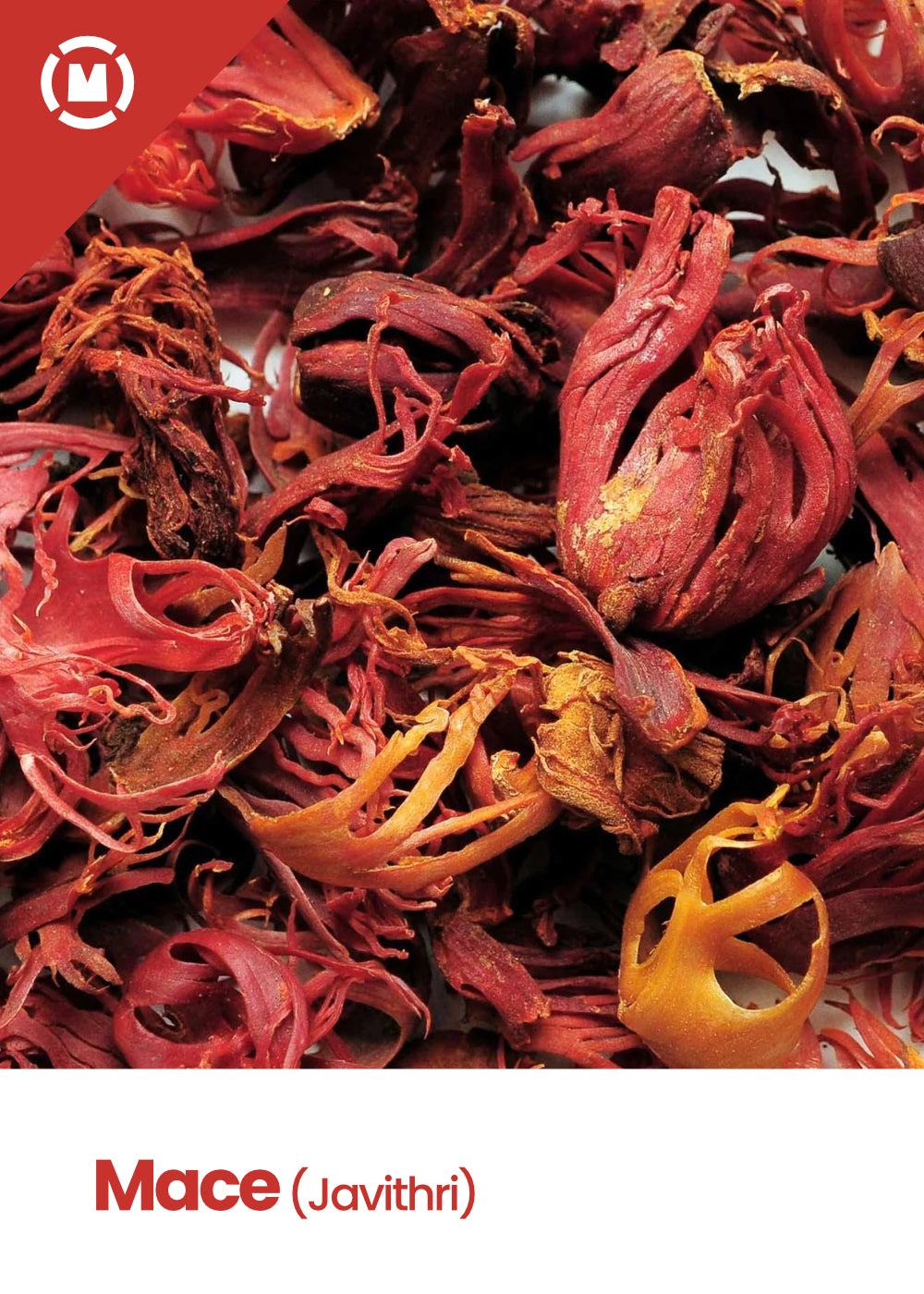M-Spice
Mace (Javithri)
Mace (Javithri)
Couldn't load pickup availability
Mace is the aril (the bright red, lacy covering) of the nutmeg seed shell. Mace has a flavour and aroma similar to that of nutmeg, with a hint of pepper.
Mace has a wide range of uses from desserts to savoury roast meats. Mace has a versatile flavour that can be used to complement a variety of foods. Mace is the main flavouring of white sauce, lasagna, and some stews. It is also used in sausages, pastries, sauces for fish and pickle, chutneys, jam and in some Indian desserts. Mace makes a notable appearance in Chettinad and Mughlai cuisine.
Mace is a highly nutritional product that contains protein and fibre. Mace works especially well with milk dishes like custards and cream sauces. It contributes to flavouring light-coloured cakes and pastries, especially doughnuts. It can enhance clear and creamed soups and casseroles, chicken pies and sauces. Mace and nutmeg are very similar, though mace is somewhat more powerful. A small amount will enhance many recipes, adding fragrance without imposing too much flavour. Mace is where the depth of spice meets the lilt of the floral. Where nutmeg deepens, mace elevates.
The mace is removed from the nutmeg shell and its broken parts are known as blades. The history of mace is closely tied to the history of nutmeg for obvious reasons, though the two items have been treated separately. Because the yield of mace is much less than nutmeg’s it has had greater value. A pile of fruit large enough to make one hundred measures of nutmeg produces a single measure of mace.



